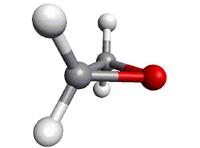|
The already extensive data set of the second entry
from July 2012 has been increased further through very
accurate measurements beween 160 and 1046 GHz
published by
(1) H. S. P. Müller, J. C. Guillemin, F. Lewen,
and S. Schlemmer,
2022, J. Mol. Spectrosc. 384, Art. No. 111584.
With respect to the 1st entry of March, 2000,
extensive far-infrared transition frequencies
were included from
(2) C. Medcraft, C. D. Thompson, E. G. Robertson,
D. R. T. Appadoo, and D. McNaughton,
2012, Astrophys. J. 753, Art. No. 18.
The initial experimental data were taken from
(3) C. Hirose,
1974, Astrophys. J. 189, L145,
from
(4) R. A. Creswell and R. H. Schwendemann,
1974, Chem. Phys. Lett. 27, 521
and from
(5) J. Pan, S. Albert, K. V. L. N. Sastry, E. Herbst, and F. C. De Lucia,
1998, Astrophys. J. 499, 517.
Uncertainties from previous publications were thoroughly
evaluated in (1). Uncertainties in (2) were too pessimistic,
those in (4) too optimistic. Uncertainties in (3) and (5)
were retained with respect to earlier compilations.
Only transition frequencies from (1) and (4) were merged.
The already accurate calculation is now even more accurate.
It should be sufficient for all observational purposes.
Calculated frequencies with uncertainties exceeding
0.1 MHz should be viewed with some caution.
At very low temperatures, it may be necessary to discern
between ortho-c-C2H4O and
para-c-C2H4O.
The ortho states are described by
Ka + Kc even,
the para states by Ka + Kc
odd. The nuclear spin-weight ratio is 5 : 3 for
ortho-c-C2H4O
: para-c-C2H4O.
The JKaKc = 101
is the lowest para state. It is 1.2081 cm–1
above ground. Because of this very small energy difference,
separate analyses are probably only required for absorption
transitions originating in the 101 level.
The partition function takes into account the ground
vibrational state only because the molecule resides in
somewhat colder regions. Excited vibrational states are quite
high; their effect is still modest at room temperature.
The dipole moment was taken from
(6) G. L. Cunningham Jr., A. W. Boyd, R. J. Myers,
W. D. Gwinn, and W. I. Le Van,
1951, J. Chem. Phys. 19, 676 ;
however, its value was slightly increased by 0.02 D
due to an updated reference value for OCS, see (1).
|
